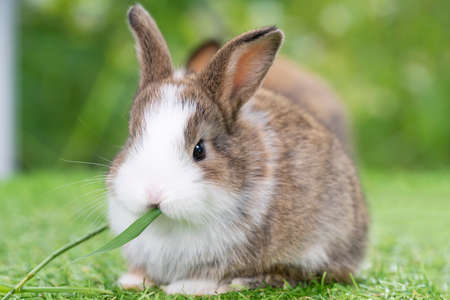Understanding Your New Rabbit’s Needs
Welcoming a rabbit into your UK home is a delightful experience, but it’s important to understand their unique needs to ensure they thrive. Rabbits are intelligent, social animals who require more than just a hutch and some carrots. In line with the Animal Welfare Act 2006, you are legally obliged to provide appropriate care, which includes a suitable environment, nutritious diet, and opportunities for natural behaviours. Consider providing a spacious enclosure—ideally indoors or in a secure garden—with plenty of room for hopping, stretching, and exploring. Enrichment items such as tunnels, chew toys, and platforms help keep your rabbit mentally stimulated. Typical rabbit behaviours include digging, chewing, and social grooming; these should be encouraged through safe outlets rather than discouraged. Always remember that rabbits are prey animals, so they need hiding places to feel secure. Familiarise yourself with their daily routines and subtle body language—such as thumping or tooth purring—to build trust from the very beginning. By respecting your rabbit’s physical and emotional needs according to UK welfare standards, you lay the foundation for a happy and healthy companion.
Preparing Your Home for a Rabbit
Before welcoming your new rabbit, its important to ensure your home is both safe and comfortable for your furry friend. Rabbits are naturally curious and can easily get into mischief if the environment isn’t properly prepared. Below, youll find step-by-step advice on how to rabbit-proof your space, select the right accommodation, and gather essential supplies commonly available in the UK.
How to Rabbit-Proof Your Home
Rabbits love to nibble and explore, so safeguarding your household is crucial. Begin by covering electrical wires with protective tubing or placing them out of reach. Block off access to areas where rabbits might hide or chew on furniture, such as under sofas or behind appliances. Remove or secure houseplants, as some can be toxic to rabbits. Lastly, keep small objects and items like shoes or books off the floor to prevent accidental ingestion or damage.
Selecting Suitable Accommodation
Choosing the right home for your rabbit is vital for their health and wellbeing. In the UK, it’s common to provide outdoor hutches with attached runs, or spacious indoor pens. The RSPCA recommends a minimum hutch size of 6ft x 2ft x 2ft, with an exercise run at least three times as long as the hutch. Ensure the accommodation is weatherproof and secure from predators if kept outdoors.
| Accommodation Type | Pros | Cons |
|---|---|---|
| Outdoor Hutch & Run | Natural environment, more space | Exposure to weather, predators |
| Indoor Pen | Protection from elements, easier supervision | Needs space indoors, more cleaning required |
Sourcing UK-Available Essentials
Your rabbit will need several key items to settle in comfortably:
| Item | Description |
|---|---|
| Hay (Timothy/Meadow) | Main food source; readily available at UK pet shops and supermarkets |
| Bedding (Paper-based or Straw) | Absorbent and soft for comfort; avoid cedar/softwood shavings |
| Litter Tray & Paper Pellets | Encourages good hygiene; helps with litter training |
| Enrichment Toys (Chew toys, tunnels) | Keeps rabbits active and prevents boredom; look for UK brands like Rosewood or Burgess Excel |
Top Tip:
Buy supplies from reputable UK retailers such as Pets at Home or Jollyes to ensure quality and availability of rabbit-safe products.
Remember:
A well-prepared home not only keeps your rabbit safe but also lays the foundation for a trusting relationship as you introduce them into your household.
![]()
3. Making the First Introduction
Bringing a new rabbit home is an exciting moment, but it’s important to ensure that their first introduction to your household is calm and positive. Here’s a step-by-step guide tailored for UK homes on how to help your new furry friend settle in smoothly.
Step 1: Quiet Arrival
When you first bring your rabbit home, make sure the environment is peaceful and free from loud noises or too many people. British homes can be busy places, especially after work or school hours, so choose a quiet time for their arrival. Place the rabbit’s carrier in the room where they’ll be staying, allowing them to get used to new smells and sounds before opening the door.
Step 2: Gradual Exploration
Let your rabbit come out of their carrier at their own pace—don’t rush or force them. Rabbits are naturally curious but also cautious, especially in unfamiliar territory. You might notice your bunny hesitating or hiding at first; this is completely normal. Allow them access to a small, secure area initially (such as a puppy pen or sectioned-off part of a room) so they don’t feel overwhelmed. In many UK households, using a spare bedroom or quiet living space works well for this purpose.
Step 3: Building Trust Through Positive Interactions
The key to helping your new rabbit feel safe is gentle, positive interaction. Sit quietly nearby and let them approach you when they’re ready. Speak softly using calm, reassuring tones familiar in British households—phrases like “Good bunny” or “Well done” work wonders. Offer treats such as a small piece of spring greens or a slice of carrot from your hand to encourage trust. Avoid sudden movements, loud voices, or picking them up straight away; instead, give them time to build confidence around you.
Extra Tips for UK Rabbit Owners
- Patience is essential—some rabbits may settle in within days, while others take longer.
- If you have other pets (like dogs or cats), keep them separate during these early days.
- Remember, British weather can affect bunnies too; ensure their space is cosy and draught-free.
Creating a Calm Start Sets the Tone
By following these simple steps—quiet arrival, gradual exploration, and gentle interactions—you’ll lay the foundation for a happy relationship with your new rabbit. With kindness and patience, even the shyest bunny will soon start to show their charming personality in your UK home.
Introducing Your Rabbit to Other Pets
Bringing a new rabbit into a home where other pets already live, such as cats or dogs, is quite common in the UK. However, first introductions must be managed with care and patience to ensure everyone’s safety and comfort. Here’s how you can help your furry companions get off on the right foot (or paw).
Preparing for the First Meeting
Before any face-to-face introduction, make sure your rabbit has had a chance to settle into their new space. Secure all doors and exits, and remove potential hazards. It’s best to keep your existing pet on a lead or in a carrier for the initial encounter, while your rabbit remains in their secure enclosure.
Step-by-Step Introduction Process
| Step | Action | Purpose |
|---|---|---|
| 1 | Allow pets to sniff each other under a door or through a barrier | Familiarise scents safely |
| 2 | Short visual introduction with supervision | Observe body language for stress or aggression |
| 3 | If calm, allow closer interaction while holding/tethering existing pet | Build confidence at their own pace |
| 4 | Gradually increase time spent together over several days/weeks | Develop positive associations and trust |
| 5 | If signs of distress appear, end session and try again later | Avoid negative experiences that could hinder bonding |
Recognising Signs of Stress or Discomfort
Its important to watch closely for signals that either animal is feeling anxious or threatened. Common signs of stress in rabbits include:
- Thumping hind legs repeatedly
- Lying flat with ears back tightly against the body
- Trembling or rapid breathing
- Aggressive lunging or vocalising (rare but possible)
- Refusing food after an introduction session
If you spot these behaviours, calmly separate the animals and give your rabbit some quiet time. For UK households, it’s also good practice to provide safe hiding places—such as cardboard boxes or tunnels—that are easy for rabbits to access but out of reach for larger pets like dogs.
Tips for UK Cat and Dog Owners
- Cats are usually more curious than aggressive; let them observe from a distance at first.
- For dogs—especially working breeds—ensure they are well-trained to respond to commands like “leave” and “stay.” Reward calm behaviour generously with treats and praise.
- Avoid leaving your rabbit unattended with any other pet until you’re confident they coexist peacefully.
- If problems persist, consult with a local vet or animal behaviourist familiar with UK pet dynamics.
With careful planning and a calm approach, introducing your new rabbit to existing pets can be a positive experience for everyone involved—laying the foundation for lasting harmony in your British household.
5. Establishing a Healthy Routine
Creating a consistent daily routine is essential when welcoming a new rabbit into your UK household. According to the guidelines set by the RSPCA and other UK animal welfare organisations, rabbits thrive best with regularity in their care. This not only supports their physical health but also helps to reduce stress as they settle into their new environment.
Feeding Schedule
Rabbits require a balanced diet mainly composed of hay, supplemented with fresh greens and a small portion of quality pellets. It’s important to feed your rabbit at the same times each day—usually morning and evening. Always provide fresh water and remove any uneaten food daily to prevent spoilage and maintain hygiene.
Exercise and Enrichment
Daily exercise is vital for your rabbit’s wellbeing. The UK welfare code recommends that rabbits have access to a spacious run or secure garden area for several hours each day. Incorporate toys, tunnels, and objects to stimulate natural behaviours like digging and jumping. Supervised outdoor time in a secure area can also provide much-needed enrichment.
Cleaning Routine
Keeping your rabbit’s living space clean is crucial for preventing illness. Spot-clean litter trays and remove soiled bedding daily, with a thorough clean of the entire enclosure at least once a week. Regular cleaning routines help keep harmful bacteria at bay and ensure your home smells fresh.
Social Time
Rabbits are highly social animals who benefit from daily interaction with their owners or other compatible rabbits. Set aside dedicated time each day for gentle handling, grooming, or simply sitting quietly together. This helps build trust and reassures your new pet that they are safe and loved in their new home.
Consistency is Key
By sticking to a predictable schedule for feeding, exercise, cleaning, and socialising, you’ll support your rabbit’s physical health and emotional wellbeing. A well-established routine will make it much easier for your new companion to adjust happily to life in your UK household.
6. Finding Support in the UK
Welcoming a new rabbit into your home is an exciting journey, but you don’t have to do it alone. In the UK, there are plenty of resources and communities ready to help both new and experienced rabbit owners. Here’s how you can find the support you need to ensure your rabbit’s happy and healthy transition.
Connect with Local Vets
Your first port of call should be finding a rabbit-savvy vet in your area. Not all vets specialise in small animals or rabbits, so it’s important to choose one who understands their unique needs. Many UK veterinary practices will list “exotics” or “small mammals” among their services—don’t hesitate to ask about their experience with rabbits. Regular check-ups and guidance on diet, vaccinations, and neutering are crucial for your new companion’s wellbeing.
UK Rabbit Welfare Charities
The UK is home to several outstanding charities dedicated to rabbit welfare, such as the Rabbit Welfare Association & Fund (RWAF) and local branches of the RSPCA. These organisations offer a wealth of information on proper care, housing standards, bonding advice, and behavioural tips. They often run helplines, online forums, and even events where you can meet other rabbit owners and experts.
Community Groups for Ongoing Advice
Joining a community group can provide ongoing support as you integrate your rabbit into your household. Look for local Facebook groups, online forums like The Rabbit Forum UK, or community pages where members share advice, success stories, and recommendations for supplies or boarding facilities. Many groups also organise meet-ups or “bunny socials”, giving you the chance to connect with fellow enthusiasts face-to-face.
Why Ongoing Support Matters
No matter how much research you’ve done, questions will pop up along the way—from health concerns to behaviour quirks. Reaching out for advice ensures you’re not left guessing and helps you build confidence as a responsible owner.
Top Tip:
If you ever feel uncertain about your rabbit’s health or behaviour, don’t hesitate to contact your vet or seek guidance from reputable welfare organisations. The UK’s strong network of rabbit lovers is always ready to lend a hand!


